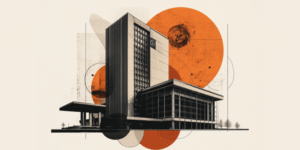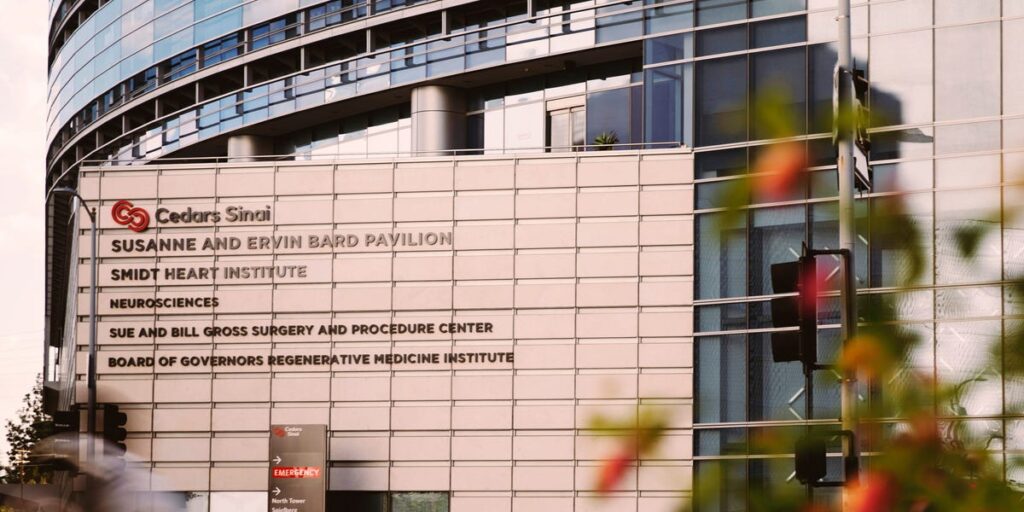Cedars-Sinai is a nonprofit healthcare organization based in Los Angeles. It’s comprised of hospitals, clinics, and research facilities. Founded in 1902, Cedars-Sinai has more than 40 locations, employs over 4,500 physicians and nurses, and serves more than 1 million patients every year.
Situation analysis
Caroline Goldzweig, chief medical officer of Cedars-Sinai Medical Network, told Business Insider that the organization wanted to expand patients’ access to primary care in a more efficient and convenient way. For instance, sometimes there are lengthy wait times for in-person doctor’s appointments.
At the same time, Goldzweig said the organization was looking to reduce the administrative burden on physicians, including patient intake and data entry, so that they could focus on providing care.
To address these challenges, the organization launched Cedars-Sinai Connect in 2023. CS Connect is an artificial intelligence-powered virtual platform where patients can access healthcare support 24/7.
Goldzweig said the AI technology allows healthcare providers to better support their patients while improving the speed of care delivery. “The other exciting thing is the ability to offer patients care in ways that meet their needs,” she said.
Key staff and partners
Goldzweig told Business Insider that CS Connect was built using K Health, a digital healthcare company providing AI-powered primary and urgent care services. Cedars-Sinai’s information technology teams worked with K Health to sync patients’ electronic health records into the platform, she said.
Cedars-Sinai’s enterprise data intelligence and digital strategy teams were also involved in creating CS Connect. They continue to help manage it.
AI in action
The goal of the AI tool is to enable providers to spend more time counseling patients and making treatment decisions, rather than doing patient intake.
To access the AI features, patients log into CS Connect via a mobile app or its website. Goldzweig said a chat feature then starts asking the user questions about their symptoms.
The AI algorithm compares the patient’s responses to their existing medical records and the records of other patients in the system who had similar symptoms. It then asks more detailed questions about a patient’s specific health problems. The chatbot, for example, may prompt the patient to submit photos of their sore throat or rash.
Goldzweig said the chat function is similar to how a physician might identify a patient’s ailment.
The AI then summarizes the patient’s information — a task that usually demands manual effort from physicians — and recommends a treatment.
The data collected by CS Connect is “part of the efficiency process,” Goldzweig said. “It allows the physicians to review it, to understand what’s going on, and to validate things with the patient — ask a couple of clarifying questions and maybe get a little bit more history.”
Physicians can choose to disagree with the AI’s recommendations. Goldzweig said either way, they’re required to sign off on each patient’s treatment plan.
Did it work, and how did leaders know?
Goldzweig told BI that about 42,000 individual patients have used CS Connect.
In April 2025, Cedars-Sinai published a study in the journal Annals of Internal Medicine comparing AI treatment recommendations in CS Connect with final recommendations from doctors.
The study reviewed 461 physician-managed visits with AI recommendations for respiratory, urinary, vaginal, eye, and dental symptoms. Results showed that when AI and physician recommendations differed, the AI suggestions were often rated as higher quality.
The study found that 77% of AI recommendations were rated as optimal, while 67% of physicians’ decisions were rated optimal.
For example, patients with recurring urinary tract infections sometimes encounter antibiotic resistance. Goldzweig said the AI was successful at identifying these patients and recommended a bacterial culture before prescribing antibiotics. In contrast, doctors sometimes prescribe medication without testing, which she said could result in the infection coming back.
Goldzweig added that the study suggests that the AI tool tends to be more guideline-focused, while physicians have the ability to adapt medical guidelines based on the nuance of a patient’s case.
Goldzweig said the study has limitations, though. It examined only a few medical conditions and didn’t factor in the nuance of individual patient cases. Another limitation is that the medical chart reviewers could see whether the recommendation was made by the AI or a physician.
Cedars-Sinai is working to expand CS Connect. The organization is piloting remote patient monitoring technology using AI to help people manage chronic diseases, like high blood pressure. It’s also planning to use the AI technology to connect in-person urgent care visits with virtual care.
Read the full article here
















